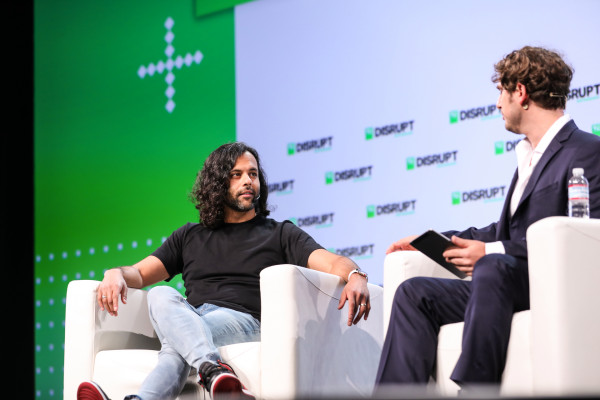Welcome to The Exchange, an upcoming weekly newsletter featuring TechCrunch and Extra Crunch reporting on startups, money and markets. You can sign up for it here to receive it regularly when it launches on July 25th, and catch up on prior editions of the column and newsletter here.
It’s Saturday, July 18, and this is The Exchange. Today we’re wrapping our look at second-quarter VC, capping off the recent IPOs of some venture-backed startups, and digging into the hottest VCs while peeking at a new startup trend.
Venture capital activity by the numbers
As July rubs along we’re getting deeper into the third quarter of 2020, meaning it’s time to close the books on Q2. To that end The Exchange combed through all the second-quarter VC data that we could this week.
But, despite working to grasp the health of the global venture scene, the United States’ own venture capital totals, and diving more deeply into AI/ML startups and how women-founded startups fundraised in Q2, there’s still more data to sift.
Keeping brief as we are a bit charted-out, New York City-based venture capital group Work-Bench released a grip of numbers detailing the city’s enterprise-focused startups’ Q2 VC results. Given that Work-Bench invests in enterprise tech, the data’s focus was not a surprise.
The numbers, per the firm, look like this:
- NYC enterprise tech startups raised 51 rounds in Q2 worth $1.5 billion, above Q1 totals of 44 deals worth $1.3 billion
- Those quarterly results were the best recorded, according to a Work-Bench historical analysis of enterprise tech deals since at least the start of 2014
- Q1 and Q2 2020 were so active in the sector and city that the first half of this year saw nearly as many deals and dollars ($2.7 billion in 95 total deals) than the same cohort and metropolis managed in all of 2019 ($3.3 billion in 114 total deals).
The data is not surprising. B2B startups are raking in a larger share of venture capital rounds as time goes along, so to see NYC’s own enterprise-focused startups doing well is not shocking. (And if you add in the recent $225 million UIPath round, the Big Apple’s enterprise startups are even closer to their 2019 venture dollar benchmark, though the UIPath deal came in Q3.)
One last bit of data and we are done. Fenwick & West, a law firm that works with startups, released a report this week concerning Silicon Valley’s own May VC results. Two data points in particular from the digest stood out. Chew on these (emphasis TechCrunch):
The percentage of up-rounds declined modestly from 71% in April to 67% in May, but continued [to be] noticeably lower than the 83% up-rounds on average in 2019. […] The average share price increase of May financings weakened noticeably, declining from 63% in April to 43% in May. The results for both April and May were significantly below the 2019 average increase of 93%.
The Q2 data mix then shakes out to be better than I would have expected with plenty of highlights. But if you look, it isn’t hard to find weaker points, either. We are, after all, in the midst of a pandemic.

Going public in a pandemic
nCino and GoHealth went public this week. TechCrunch got on the blower afterwards with nCino CEO Pierre Naudé and GoHealth CEO Clint Jones. By now you’ve seen the pricing pieces and notes on their companies’ early performance, so let’s instead talk about why they chose to pursue traditional IPOs.
Our goal was to understand why CEOs are going public through initial public offerings when some players in the venture space have soured on traditional IPOs. Here’s what we gleaned from the leaders of the week’s new offerings:
nCino: Naudé didn’t want to dig into nCino’s IPO process, but did note that he read TechCrunch’s coverage of his company’s IPO march. The CEO said that his firm was going to have an all-hands this Friday, and then get back to work. Naudé also said that becoming a public company could help the nCino brand by helping others understand the company’s financial stability. The company’s larger-than-expected IPO haul (one point for the old-fashion public offering, we suppose) could provide it with more options, we learned, including possibly upping its sales and marketing spend.
- The Exchange’s take: It’s very hard to get a CEO to say on the record that a different approach to the public markets than the one they took was enticing. Nothing that Naudé was off-script for a newly public company.
GoHealth: Jones told TechCrunch that GoHealth’s IPO was oversubscribed, implying good pre-IPO demand. When it came to pricing, GoHealth worked through a number of scenarios according to the CEO, who didn’t have anything negative to share about how his company finally set its IPO valuation. He did bring up the importance of collecting long-term investors.
- The Exchange’s take: GoHealth shares dipped after the company went public, so its offering won’t engender the usual complaints about mispricing. nCino, in contrast, shot higher, making it a better poster child for the direct-listing fans out there.
The method by which a company goes public is only a piece of the public-markets saga that companies spin. Once public, either through a direct listing or SPAC-led reverse-IPO, all companies become lashed to the quarterly reporting cycle. Even more common than complaints about the IPO process among Silicon Valley is the refrain that public investors are too short-term-focused to let really innovative companies do well once they stop being private.
Is that true? TechCrunch spoke with Medallia CEO Leslie Stretch this week to get notes on the current level of patience that public investors have for growing tech companies; are public markets as impatient as some claim?
According to Stretch, there can be enough space in the public markets for tech shops to maneuver. At least that was his take a year after Medallia’s own 2019 IPO (transcript edited by TechCrunch for clarity; additions denoted by brackets):
[Our] partnership with public investors has been phenomenal. They really test you, you know? They really test your proposition, [and] they test your operational resilience in a way that just makes you better. And they give you feedback. Our philosophy is feedback always makes you better.
What people want to do is they want to crest the really big growth rate [that] is unassailable, it can’t be challenged. And then you come out in public, and it’s a no brainer. And some companies managed to do that. But of the [thousands of Series] A rounds that took place in early 2000s, you know, only 75 companies made it public. Right? We’re one of them.
I’m not fearful. I don’t think people should be fearful of [going public]. They should partner with public investors. The stock price, and the quarter-to-quarter, will be what it will be. Don’t worry about that. It’s what are you building for the long term, and make sure you have enough cash, of course, to meet your ambitions. [But] also a bit of fiscal discipline actually makes your products better, because you think how about how you invest, and harder about your priorities. That’s my view on [the] public piece.
Who wants to bet that unicorns keep putting off their IPOs anyways?

Odds & Ends: Popular VCs, extensions, and more
Let’s wrap with some fun stuff, kicking off with the TechCrunch List, a dataset that set out to figure out which VCs were the most likely to cut first checks. I’ve already used it to help put together an investor survey (stay tuned). It’s in front of the Extra Crunch paywall, so give it a whirl.
If you are part of Extra Crunch, Danny also pulled out an even more exclusive list that we built off the back of thousands of founder comments.
And I have two trends for you to think on. First, a wave of startups are trying to make our new, video-chatting based world a better place to be. It will be super interesting to see how much space is left in the market by the incumbent players currently battling for market leadership.
Second, some startups are raising extension rounds not only because they need defensive capital, but because they’ve caught a tailwind in the COVID era and want to go even faster. So, from a somewhat safe move, some extension rounds these days are more weapons than shields.
And that’s all we have. Say hi on Twitter if there’s something you want The Exchange to explore. Chat soon!











